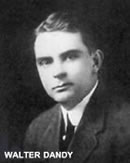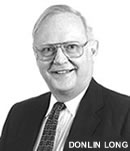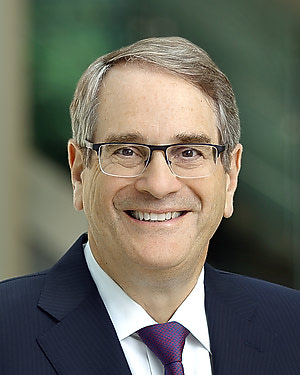Social Studies Department World History Final Semester 1 Review Sheet
The history of neurologic and neurosurgical innovation at The Johns Hopkins Infirmary begins with the establishment's opening in 1889. In the early on 1900s Harvey Cushing, "the father of neurosurgery," performed the first successful operations for brain tumors. In 1937 Walter Not bad performed the get-go aneurysm clipping.
A dedication to agreement the nervous system through enquiry and how it can impact clinical care has defined Johns Hopkins Neurology and Neurosurgery since the very get-go. Our team apace emerged as leaders with enquiry on how the brain reacts to injury and with inventions such equally the use of X-rays to guide brain surgery.
A one-half-decade later on, when Johns Hopkins neurologists and neurosurgeons discovered that strokes, encephalon and nervous organisation disorders and injuries, nowadays such distinct bug, that only specialized intensive care can salve patients, they pioneered the first dedicated neurological disquisitional care unit (NCCU) in the country.
The Story of Neurology and Neurosurgery
Read nigh the history of neurology and neurosurgery at Johns Hopkins:
-
A History of Neurology at Johns Hopkins
Johns Hopkins Neurology: One-half a Century of Innovation vividly describes transformations in many subspecialty areas of neurology.

-
A History of Neurosurgery at Johns Hopkins
The Special Field is a history of Johns Hopkins' Section of Neurosurgery and tells the fascinating story of its impact on groundbreaking discovery and treatment.

Central Names in the History of Neurosurgery at Johns Hopkins
-
By the time Cushing accepted the Harvard Chair of surgery in 1912, his work at Johns Hopkins had established him as the outstanding young surgeon in the United States. Cushing brought Halsted's meticulous surgical technique to the new field and added Osler's careful clinical observation and his own penchant for accurate documentation. His clinical contributions are legendary: the utilise of 10-rays in surgical do, physiological saline for irrigation during surgery, understanding the pituitary'southward function, founding the clinical specialty of endocrinology, the anesthesia record, the use of blood pressure measurement in surgical practice, and the physiological consequences of increased intracranial pressure.
One of the chief inducements for Cushing to stay in Baltimore upon completion of his residency was his appointment as Managing director of the Hunterian Laboratory. Our concept of the clinician/scientist in medicine largely derives from Cushing's vision of the Hunterian as a place for young physicians to larn to do research.
-
 1 of the primeval products of the Hunterian experience was Walter Dandy. During the two years subsequently medical schoolhouse, Bully completed his monumental work on cerebrospinal fluid production, judged by many to be the finest slice of surgical enquiry ever accomplished. While still a house officeholder, he devised pneumo-encephalography, which was the basis of neurological imaging for nigh 50 years. Dandy went on the exist the most famous surgeon of his generation and the greatest technician the field has known. His innovations introduced surgery for disc disease, surgery for aneurysms and arteriovenous malformations also every bit surgery for functional disease. The modern scope of neurosurgery was encompassed by Cracking.
1 of the primeval products of the Hunterian experience was Walter Dandy. During the two years subsequently medical schoolhouse, Bully completed his monumental work on cerebrospinal fluid production, judged by many to be the finest slice of surgical enquiry ever accomplished. While still a house officeholder, he devised pneumo-encephalography, which was the basis of neurological imaging for nigh 50 years. Dandy went on the exist the most famous surgeon of his generation and the greatest technician the field has known. His innovations introduced surgery for disc disease, surgery for aneurysms and arteriovenous malformations also every bit surgery for functional disease. The modern scope of neurosurgery was encompassed by Cracking. -
Swell's successor was A. Earl Walker, who established the first neurosurgery residency program at Johns Hopkins and emphasized research training during residency. Information technology was his vision of the academic neurosurgeon as a researcher that kept neurosurgery within the National Institutes of Health programs. With a few other equally informed leaders, he contested the decision of organized neurosurgery to reject government aid for research and neurosurgery causeless the important function it has go on with the NIH.
-
 In 1973, Donlin 1000. Long succeeded Walker and the organization of the current programme began. In 1982, the Adolf Meyer Heart for Psychiatry and the Neurosciences opened. His vision helped form the philosophical basis for the amalgamation of psychiatry, neurology and Neurosurgery and the development of a neuroscience center. The conceptual and practical base for neurosurgeons is no longer general surgery, but the neurological sciences. Investigators interested in similar diseases work together without regard to their specialty preparation. Well-nigh neurological diseases are improve treated past teams of specialists representing all of the medical expertise the patients need than through individual departments. Neurosurgeons at present demand education in related fields such as otolaryngology, neuro-ophthalmology, and orthopaedics, which are beyond the boundaries of the traditional specialty. Dr. Long'southward legacy is alive and well not merely at Hopkins, but in neuroscience eye's of excellence worldwide.
In 1973, Donlin 1000. Long succeeded Walker and the organization of the current programme began. In 1982, the Adolf Meyer Heart for Psychiatry and the Neurosciences opened. His vision helped form the philosophical basis for the amalgamation of psychiatry, neurology and Neurosurgery and the development of a neuroscience center. The conceptual and practical base for neurosurgeons is no longer general surgery, but the neurological sciences. Investigators interested in similar diseases work together without regard to their specialty preparation. Well-nigh neurological diseases are improve treated past teams of specialists representing all of the medical expertise the patients need than through individual departments. Neurosurgeons at present demand education in related fields such as otolaryngology, neuro-ophthalmology, and orthopaedics, which are beyond the boundaries of the traditional specialty. Dr. Long'southward legacy is alive and well not merely at Hopkins, but in neuroscience eye's of excellence worldwide. -
 Dr. Henry Brem has recently succeeded Dr. Long as the Chairman of Neurosurgery. He is standing the clinician-scientist tradition that started with Cushing over 100 years ago. The section has now grown to over 30 full time kinesthesia and approximately 4,000 surgeries are performed each year. Neurosurgery at Hopkins remains one of the most well funded departments in the state in terms of research dollars and perennially ranks among the best in the country clinically. We expect the Johns Hopkins Department of Neurosurgery to continue its legacy of good patient intendance and innovation well into the foreseeable future.
Dr. Henry Brem has recently succeeded Dr. Long as the Chairman of Neurosurgery. He is standing the clinician-scientist tradition that started with Cushing over 100 years ago. The section has now grown to over 30 full time kinesthesia and approximately 4,000 surgeries are performed each year. Neurosurgery at Hopkins remains one of the most well funded departments in the state in terms of research dollars and perennially ranks among the best in the country clinically. We expect the Johns Hopkins Department of Neurosurgery to continue its legacy of good patient intendance and innovation well into the foreseeable future.
History of Neurology at Johns Hopkins
The Department of Neurology at Johns Hopkins was founded in 1969. In this remarkably short period of time, the Department has become one of the most influential in the world, and has trained a remarkable group of leaders of other departments. Much of the success is due to the energy and vision of Guy McKhann (the 1969-89 era) and his initial recruits, just the soil was prepared past a serial of individuals and their often conflicting visions, dating dorsum to the founding of The Johns Hopkins Hospital in 1889 (the first lxxx years).
The Hopkins environment provided fertile ground for the growth of the Neurology Department Hopkins was the birthplace of Pediatric Neurology under Frank Ford, as well as Neuro-ophthalmology under his colleague and friend, Frank Walsh. The Schoolhouse of Hygiene and Public Health was home to chronic disease and stroke epidemiology under Abraham Lillienfeld, and the basic science departments of the School of Medicine were headed by earth renowned neuroscientists Vernon Mountcastle in Physiology and David Bodian in Anatomy. The Department of Neurology thrived.
In the summer of 1969, six new faculty members joined the 3 original members of the pocket-sized division of Neurology and established distinct adult and pediatric neurology inpatient units. Iii new enquiry laboratories also were initiated: Neurochemistry under Guy McKhann, the Kennedy Professor and showtime Director of the Department of Neurology; Neurovirology and Immunology, under Richard Johnson, the Eisenhower Inquiry Professor of Neurology; and Neuromuscular Disease under Daniel Drachman. Over two decades, the size and breadth of the inpatient, outpatient, and consultation services increased rapidly and other subspecialty groups developed with accompanying investigative piece of work. Boosted enquiry and grooming programs were developed in Stroke, Neuro-oncology, Neuropathology, Neuro-ophthalmology, Epilepsy, Cognitive Neuroscience, Genetics, and Neuro-intensive Care.
With departmental growth, the inpatient units, outpatient clinics, offices, and laboratories became scattered throughout the Johns Hopkins medical campuses. In 1982, the Adolph Meyer Building was opened and all the components of the department were consolidated and dedicated neurological intensive care and epilepsy monitoring units were established.
The evolution of the department continues. Additional enquiry laboratories accept been caused to meet the needs of expanding investigative piece of work. From the original ix members of the kinesthesia in 1969, the department has now grown to over lxx full-time neurological clinician-investigators.
garciadideseld1987.blogspot.com
Source: https://www.hopkinsmedicine.org/neurology_neurosurgery/about_us/history/index.html

0 Response to "Social Studies Department World History Final Semester 1 Review Sheet"
Post a Comment